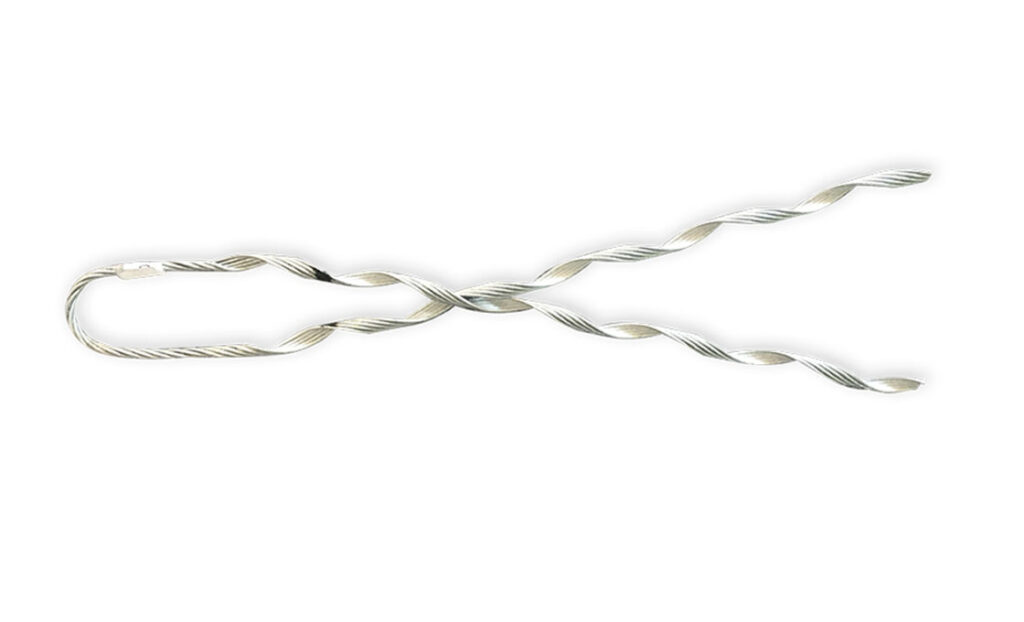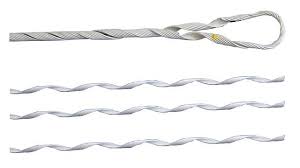
A guy grip is a type of hardware used to secure and support guy wires in overhead transmission lines. It is also known as a guy wire grip or guy wire clamp. Guy grips helps to hold the guy wires firmly in place to ensure stability and safety of transmission lines. They help to prevent the guy wires from loosening or breaking which could lead to the collapse of transmission poles. It is from galvanized steel or aluminum and has a helical shape for the guy wire to wrap around. These materials help to prevent corrosion and rust from the various environmental conditions in South America. Common types of guy grips include standard guy grip, dead-end, helical, preformed, triple weave and custom guy grip. They find use in applications such as transmission lines, telecommunication, radio broadcast and renewable energy projects.
Key features of guy grip
The various features of guy grip help to ensure the safety of overhead transmission lines, utility poles and telecommunication towers. The features help to meet the specific requirements of each project. The following are the key features of the guy grip.

- Adjustability – this allows for precise control of the tension in the guy wire. This is crucial for maintaining the stability of structures.
- Corrosion resistance – guy grips are from materials that are resistant to corrosion. These include galvanized steel or aluminum. This helps them to work in outdoor applications in South America.
- Easy installation – they are easy to install with simple to use features. This makes them accessible for use in the fields.
- Vibration dampening – some of the guy grips have dampening features to reduce the effects of wind and other forces.
- Dead end capability – some of the grips have dead ends to provide a fixed grip to the guy wire.
- Helical design – this design enhances their gripping capacity and allows for higher tension control.
- Secure grip – the grips provide a secure grip on the guy wire to prevent it from slipping or loosening.
- Durability – they are also able to withstand environmental stress and load-bearing requirements.
- Versatility – the versatility allows for their use in a wide range of industries and projects. This is because they are capable to accommodate different guy wire dimensions.
Selection and installation of guy grip
The selection process includes considering various factors that influence the use of guy grips in South America. These factors help to ensure the selected grips are suitable for the specific project. The factors include corrosion resistance, load capacity, tension requirements and application. The installation process should ensure the stability of overhead transmission utility poles. The following is a basic guideline on the installation of guy grip.

- Site assessment – evaluate the working area to ensure the anchor point is secure and capable of supporting the intended load.
- Guy wire preparation – cut the guy wire to the required length and leave extra length for adjustment and tensioning.
- Guy grip attachment – place the guy grip on the guy wire to ensure it positions correctly on the anchor point.
- Secure the guy wire – wrap the guy wire around the anchor point and pass it through the thimble and the through the guy grip.
- Tension adjustment – tension the guy wire to the required level to ensure the wire is tight and secure.
- Lock the guy grip – secure the guy grip by tightening the locknut on the guy grip to prevent loosening over time.
- Inspection – visually inspect the installation to ensure the guy grip is properly seated on the guy wire.
- Record keeping – maintain detailed records of the installation including date and location.
Maintenance and inspection of guy grip in South America
Proper maintenance and inspection of guy grip ensures the continued stability and safety of overhead transmission lines. It also helps to prevent issues related to wear, corrosion and tension in the various applications. Also, it is advisable to perform periodic professional inspections to ensure the continued performance. The following is a basic guide on the inspection and maintenance of guy grips in South America.

- Regularly inspect the condition of the guy grips to check signs of wear, corrosion or damage. The frequency could be annually or semi-annually.
- Check the tension of the guy wires to ensure they remain within the recommended range.
- Check for signs of corrosion and apply corrosion resistant treatments. This is to ensure the continued performance.
- Clean the hardware that may have dirt, debris or contaminants to help prevent corrosion. It also helps maintain the performance of the guy grip.
- Apply lubrication to moving parts of the guy grips to reduce friction and prevent wear.
- Check the installations to ensure there are no signs of tilting, leaning or unusual movement.
- Measure and verify the tension of the guy wires using suitable measurements tools. Ensure the tension remains within the recommended range for stability.
- Maintain records of inspections and maintenance to help track performance of the guy grip.
Comparative analysis of guy grips in South America.
A comparative analysis includes assessments and evaluation of various factors in the market. These factors help to ensure proper selection and performance of the guy grips in various applications. This includes assessing the various types, designs, brands and manufacturers in the market. Additionally, it is advisable to consult with industry professionals to guide in selecting the best guy grip. The following are the factors to include in the comparative analysis in South America.

- Maintenance requirements – select the guy grips that require less frequent maintenance. to reduce costs and downtime.
- Local availability – the availability of local suppliers and manufacturers of guy grips. This helps to reduce the lead times and logistics during sourcing.
- Customization – customization helps to meet the specific requirements of the application.
- Specific application features – evaluate whether the guy grips have features tailored to specific applications.
- Load bearing capacity – the load bearing capacity of the guy grip should be suitable for the specific applications.
- Material – evaluate the materials used in the manufacture of guy grips which should be corrosion resistant and durable.
- Tension control – assess the adjustability of the guy grips which should offer precise tension control.
- Environmental factors – consider the diverse climates in south America including coastal areas and arid regions. Assess which guy grips offer the best corrosion resistance and durability.
- Ease of installation – consider the ease of installation and look for grips that are user friendly.
- Costs – balance the need for quality and performance with budget constraints. Compare the costs effectiveness of different guy grips.
Certifications and standard in South America
There are various standards and certifications that ensure the quality, safety and performance of guy grips. Local or national authorities and regulatory bodies may specify specific requirements of the guy grips. Project planners should collaborate with manufacturers to ensure they select guy grips that meet their application needs. Additionally, it important to check for compliance with relevant regional standards and regulations. The following are the common standards and certifications in south America.

- ASTM standards – these are international standards that provide a range of standards related to materials and products used in various industries.
- ISO certifications – this is a certification for the quality of materials, coatings and performance of the guy grips.
- IEC standards – these are international standards and guidelines related to electrical equipment including guy grips.
- Regional regulations – south American countries have their own regulations and standards governing the construction and maintenance of electrical transmission systems.
- ANSI standards – these are standards for various industries including electrical and construction fields.
- CE certification – this is applicable to imported equipment and materials in South America.
Regional market for guy grips in South America
There are several factors that influence the regional market for guy grips in South America. These factors influence the demand and availability of guy grips in the region. Also, manufacturers and suppliers could provide high-quality, corrosion resistant guy grips to meet the specific demand. The following are the factors that influence the regional market for guy grips in South America.
- Renewable energy – renewable energy projects require the use of guy grips to secure the wind turbines towers.
- Urbanization and development – the need for stable lighting poles and overhead electrical distribution lines also influence the regional demand for guy grips.
- Energy efficiency initiatives – guy grips help to improve the efficiency and grid reliability of the existing power infrastructure.
- Local manufacturing – availability of local manufacturing of guy grips offers opportunities for local sourcing.
- Maintenance and replacement market – a substantial market for maintenance and replacement of aging grips increases availability in the market.
Frequently asked questions
A guy grip is a dead-end device used to anchor guy wires to the overhead transmission poles. It helps to provide support and stability to various applications in south American applications.
Guy grips offer several benefits to various applications in south America. These include increased safety, improved reliability, reduced maintenance costs and extended lifespan.
Best practices for guy grips in south American countries include choosing the right guy grip for the application, installing the guy grip properly and regularly inspecting guy grips.
